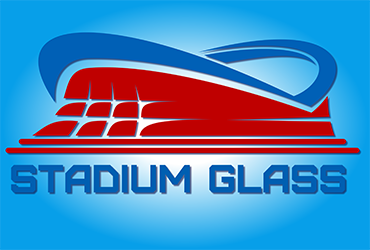GLASS ASSOCIATION OF NORTH AMERICA
Quench Patterns in Heat-Treated Architectural Glass
(Taken from the GANA Glass Informational Bulletin – GANA TD 05-0108, which can be downloaded here)
Glass used in architecture today commonly includes clear and tinted glass substrates, lowemissivity and solar-control coatings, decorative ceramic-frit patterns and safety glazing considerations that require glass to be heat-treated. Heat-strengthened and fully tempered glass is designed to meet increased the1mal and mechanical stresses, or other specified physical criteria. As a result of the heat-treating fabrication process, quench patterns/marks or what is often refetTed to as a “strain pattern,” may become visible in heat-strengthened and fully tempered glass under certain natural or polarized lighting conditions.
ASTM International consensus document C 1048 -Standard Specification for Heat-Treated Flat Glass -Kind HS, Kind FT Coated and Uncoated Glass; addresses this optical phenomenon as follows:
Section 7. Fabrication
7 .5 Strain Pattern -In heat-strengthened and fully tempered glass, a strain pattern, which is not normally visible, may become visible under certain light conditions. It is characteristic of these kinds of glasses and should not be mistaken as a discoloration or nonuniform tint or color.
The intensity of the strain pattern may vary from lite to lite, and/or within a given lite. The presence of a strain pattern or the perceivable differences in the strain pattern is not a glass defect or blemish and is not cause for rejection. In addition, the presence of a strain pattern does not alter the structural integrity or safety of the glass lite.
The Heat-Treating Process
In order to provide the required resistance to thermal and mechanical stresses, and to achieve specific break patterns for safety glazing applications, annealed float glass is strengthened through a thermal process known as heat-treating. Heat-treating includes both heat-strengthened and fully tempered glass. The most commonly used process for heat-treating architectural products requires glass to be cut to the desired size and shape, edges prepared to the specified condition, surfaces and edges to be thoroughly washed and for the lite of glass to be transported through an oven and uniformly heated to near its softening point of approximately 1150 °F (621 °C). Upon exiting the oven, the glass is rapidly cooled (quenched) by blowing air uniformly onto all surfaces simultaneously. The quenching/cooling process places the surfaces of the glass in a state of high compression and the central core in compensating tension.
The high velocity air of the quench process is applied through air nozzles or slots. Glass surfaces directly opposite the nozzles or slots achieve a slightly higher level of surface compression than adjacent areas. This creates a very slight change in density causing the glass to become optically anisotropic. Optically anisotropic means that the appearance of light passing through the glass differs as your eye moves across the glass. When polarized light from the sun passes through the heat-treated glass it experiences a phase shift. The areas of lower density ( directly under the quench nozzles) have a different phase shift than the areas with higher density ( away from the quench nozzles). These slight differences in density result in light and dark areas observed in the glass.
Pattern Visibility
While not normally visible, a pattern of perceived faint light and/or dark spots or lines in heattreated glass may become apparent under certain light and viewing conditions. The “quench pattern” is most apparent under polarized light with a visible horizon and viewed at an oblique viewing angle to the glass surface. The visibility of the pattern decreases as the viewing angle to the surface of the glass increases. When viewing from the interior of the building, the quench pattern may be visible from a 10° viewing angle and not apparent at a 90° viewing angle from the surface of the glass. When viewing the glass in reflectance from the exterior of the building, the quench pattern may be visible when looking at the glass surface at a 30-60° angle. Visibility of the quench pattern may be accentuated with thicker glass, tinted glass substrates, coated glass and multiple lites of heat-treated glass in laminated or insulating glass products. As a result of variations in fabrication systems (or tempering furnace systems), the quench pattern may vary from one fabricator to another.
As frequently seen in back and side lites of automobiles, the quench pattern in the fully tempered glass can become more visible when wearing polarized sunglasses. Polarizing filters or lens for cameras will create the same phenomena and may cause the pattern to become more visible.
Glass Inspection
Construction sites may yield viewing angles and conditions that cause the quench pattern to become visible. However, upon completion of construction; the presence of interior walls; finishes; furniture; and plants frequently results in the strain pattern being less visible or not visible at all.
The stresses introduced in the heat-treating of glass are an inherent part of the fabrication process, and while they may be affected or altered depending on the heating process, controls and/or quench design, they cannot be eliminated. Design professionals should be aware that quench patterns are not a defect in heat-treated glass and, therefore, are not a basis for product rejection.
The phenomenon of quench pattern may be visible in any heat-treated glass. While pre- or earlyconstruction applications will not provide final project conditions, consultation with the glass supplier and viewing full size mock-ups under typical site conditions and surrounding landscape may be helpful in evaluating the potential for visibility of the quench pattern.
The Glass Association of North America (GANA) has produced this Glass Informational Bulletin solely to provide general information as to quench patterns in heat-treated architectural flat glass. The Bulletin does not purport to state that any one particular type heat-treating process or procedure should be used in all applications or even in any specific application. The user of this Bulletin has the responsibility to ensure the product literature from the heat-treated glass fabricator is considered in the selection and specification of the glass. GANA disclaims any responsibility for any specific results related to the use of this Bulletin, for any errors or omissions contained in the Bulletin, and for any liability for loss or damage of any kind arising out of the use of this Bulletin.
This bulletin was developed by the GANA Tempering Division – Construction Subcommittee and approved by the Tempering Division- Standards and Engineering Committee and GANA Board of Directors. This is the original version of the document as approved and published in January 2008.
i ASTM International, 100 Barr Harbor Drive, P.O. Box C700, West Conshohocken, PA 19428-2959 United States Phone: 610.832.9500; Website: www.astm.org

